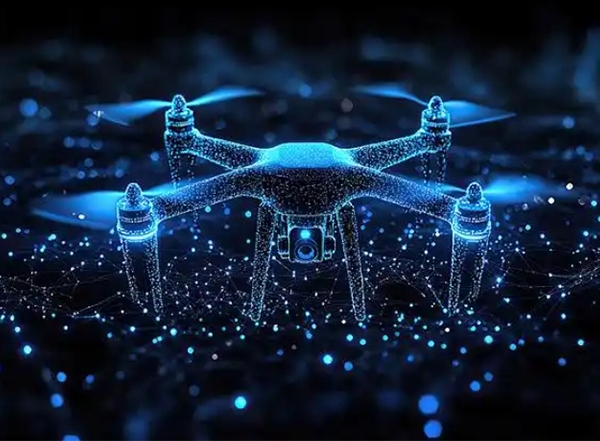
New and unique technology has been changing the world. The Unmanned Aerial Vehicle (UAV) or Drone technology is one such example. Law enforcement, security personnel and government agencies have begun to consider drones as an effective technology for surveillance and security.
Due to this rise in drone activity, there has been an increase in unauthorized usage of drones as well. Drones are authorized only if permitted by relevant authorities. Any drone used without said permission is unauthorized. Drones, or unauthorized UAVs, have become a significant concern in modern society.
This blog will focus on some of the key technologies to detect and neutralize unsanctioned drone activity.
Overview of Modern Drone Detection and Tracking Technologies
The increasing number of drones, especially the unsanctioned drones, has led to a growing threat to the security of notable public spaces and events. Data privacy and airspace security are also concerns due to the increasing drone activity. How can such a threat be tackled?
Drone detection and tracking is a security measure that has become necessary for the protection of critical infrastructure such as airports, government buildings and event spaces. Such anti-drone technologies are helpful for security and law enforcement personnel to mitigate drone threats.
Here is an overview of some of the prominent drone detection and tracking technologies.
RF (Radio Frequency) Sensors / RF Detectors
RF sensors / RF detectors receive radio waves to observe the radio frequency spectrum. These anti-drone devices detect radio communication between drones and their controllers. Anti-drone RF sensors are designed for detecting and tracking low-altitude drones, and they can effectively target a range of directions and are effective in all weather conditions.
An example of that is the ND-BR002 Anti-Drone RF Detector. It monitors electromagnetic wave signals in the environment around the clock, and identifies the drone model, location and its remote controller from the electromagnetic wave signals. RF sensor provides precise direction measurement and 360-degree detection without emitting electromagnetic waves to surrounding environment, which is more secure.
Drone Radar Systems
The drone radar system is another effective drone detection method. Drone radars emit electromagnetic waves and can spot the position of a drone through processing the echoes reflected by a flying object.
Powerful drone radar systems, such as the ND-BR022 Drone Detection Radar, use a 3D pulse doppler radar that can be effective in differentiating between different flying objects. The 3D pulse doppler radar can distinguish between flying objects based on the differences in the echoes reflected. It can differentiate between a drone, a bird and an airplane based on their characters.
Optical and Infrared Thermal Imaging Cameras
Another effective drone detection system includes optical and infrared thermal imaging cameras. These sensors work at an impressive range of wavelengths, with optical and thermal imaging technology to detect and track invading drones. Such sensor technology operates within a significant range, causing these cameras to be effective drone tracker systems.
ND-BC011 Anti-Drone Tracking Camera has both optical and infrared sensors installed. It provides real-time HD detection on both visible light and thermal infrared images. Dual cameras can effectively track drones in adverse weather conditions, as well as both during the day or at night. Hence, it is an effective drone tracker, in any environment.
Drone Neutralization Tools
Drone detection is an important tool in identifying the threat posed by unauthorized flying drone targets. However, it becomes critical to neutralize unauthorized drones to ensure security measures in both critical infrastructure protection and law enforcement.
Drone Jamming Systems
A drone jammer usually interferes with target drone’s communication and/or navigation signals by transmitting jamming signals. The target drone will be forced to land or return, thus failing to complete its mission. Drone jammers are generally categorized as directional and omnidirectional anti-drone jammers. Directional drone jammers focus on precise interference within a long range, while omnidirectional drone jammers provide 360-degree protection for a close range.
ND-BO004 Omnidirectional Anti-Drone Jammer, which supports multiple frequency interference and provides 360-degree coverage, is a powerful drone jamming system. What’s more, as it has a short disposal time and low transmitting power, it has quite low impact on the surrounding electromagnetic environment.
GPS Spoofing Systems
A GPS Spoofing System, also known as GPS signal jammer or GPS blocker, can deceive the navigation system of the target drone by sending strong satellite signals with false position information, misdirecting the drone to a preset location, and thus eliminating the drone threats.
Based on drone navigation deception technology, ND-BG002 GPS Spoofing System is obviously effective to counter the drones invading by GPS guide rather than controlling by pilot. Additionally, this GPS spoofing device offers quick response and disposal for 360-degree coverage.
The Future of Anti-Drone Technology
The effectiveness of anti-drone technology leads to the possible future consideration of the effectiveness of such tools. Most defense and security units should focus on establishing an integrated anti-drone system combining advanced anti-drone technologies, such as drone radars, RF detectors, drone jammers or blockers. This helps to create a comprehensive system suitable for various situations of anti-drone security. These integrated counter drone systems can be effectively implemented for security and law enforcement units.
Furthermore, advanced technologies such as artificial intelligence, Machine learning (ML), and intelligent algorithms can be integrated into drone detection and jamming for more effective applications.
Conclusion
In this blog, some of the key drone detection, tracking and neutralization systems have been discussed, such as radio frequency identification, anti-drone radars, drone jamming, GPS spoofing, tracking cameras and how they work.
From this discussion it can also be learned that a multi-layered and integrated anti-drone systems can enhance defensive and security aspects against these unmanned flying threats.
